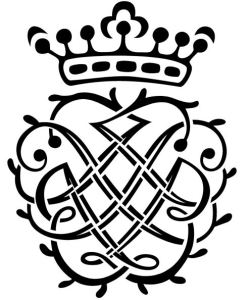Venice 1629
The Gonzaga Band
Resonus RES10218. 68’27

Music by Castello, Monteverdi, Marini, Schütz, Grandi, Pesenti,
Tarditi, Carrone, Donati, and Rè
The Gonzaga Band, as the name suggests, was founded to explore the
music of late Renaissance Italy, their name inspired by the Mantua seat of the Gonzaga family, where Claudio Monteverdi had been their maestro della musica. However, this recording is centred in Venice, around 150km east of Mantua. The year 1629 is when Schütz, then Hofkapellmeister of the Saxon court in Dresden, made a second visit to Venice to learn more about the music of Monteverdi and his contemporaries. Monteverdi had been maestro di cappella at St Mark’s since 1613, and the style of Giovanni Gabrielli, under whom Schütz studied in Venice a couple of decades earlier, was beginning to be superceded by the new style of the early Baroque. Whilst there, Schütz published the first volume of his Symphoniae Sacrae. The same year also saw the publication of music by Dario Castello, Alessandro Grandi, Biagio Marini and others. This recording explores the extraordinarily productive musical life of Venice during that single year of 1629, with pieces from the musical greats of the city, as well as lesser-known composers.
The 1620s were a key musical decade throughout Europe, with several important musical publications. It was also a time of real change in musical style and in instrumentation. The cornett, the solo instrument of choice for much of the Renaissance was beginning to be overtaken by the violin. It had always been seen as the most vocal of instruments with a sound close to that of the human voice. And you can hear why on this recording, where the sound of both cornetts and the human voice, in the shape of soprano Faye Newton, dominate.
Some years ago I reviewed a music festival where the first weekend had been devoted to the music of the cornett. Writing about Faye Newton’s singing in one of the concerts, I described her as a “cornett-on-legs”, so clear and pure was her voice, combined with her naturally communicative style. Her singing is the highlight of this recording, with the absolute clarity and precision of her voice, which she combines with the perfect intonation that is essential for any singer avoiding the use of unstylistic vibrato to hide vocal imperfections. She remains one of the finest early music singers around.
Her fellow musicians are equally impressive, with director Jamie Savan, Helen Roberts and Theresa Caudle playing cornetts, the latter also joining with Oliver Webber on violins, and Steven Devins playing organ & harpsichord. There are some outstanding solo contributions from all: half the pieces are instrumental, including the dramatic concluding Sonata decima settima in ecco by Dario Castello with its extraordinary echo sequences. The organ is particularly interesting. It is a digital reproduction of the 18th-century Venetian organ St Maria d’Alieto, Izola, on the Adriatic coast of Slovenia recorded by Sonus Paradisi for a Hauptwerk organ. Details can be found here. The sounds are convincing, although it seems that enabling sensitivity of touch is not yet something that can be digitally reproduced. Possible evidence of this can be heard at the start of track 5. The organ starts with four repeated notes – on a mechanical action organ, the subtle use of different speeds of attack and release of the notes can impart a hierarchical structure to those notes. Through different means, this is exactly what the Cornett does when it enters a few bars later. But on this digital organ, that degree of subtlety does not seem possible.
It was recorded in St Mary’s College Chapel, a Catholic seminary near Sutton Coldfield. The acoustic is a little too generous and there were times when the music sounded a little distant. If they had recorded on a real Italian organ, in an Italian church, they would almost certainly have performed from an organ gallery, on one side of the church facing across, rather than down the length of the space. I gather that for the recording, the loudspeakers were positioned where the pipes in an Italian organ would have been, above the keyboard, recreating the effect of a gallery performance.
The CD programme notes can be found here. Further recording details are here.
This is an outstanding recording of a glorious repertoire, with superb performances from Faye Newton and the Gonzaga Band.
